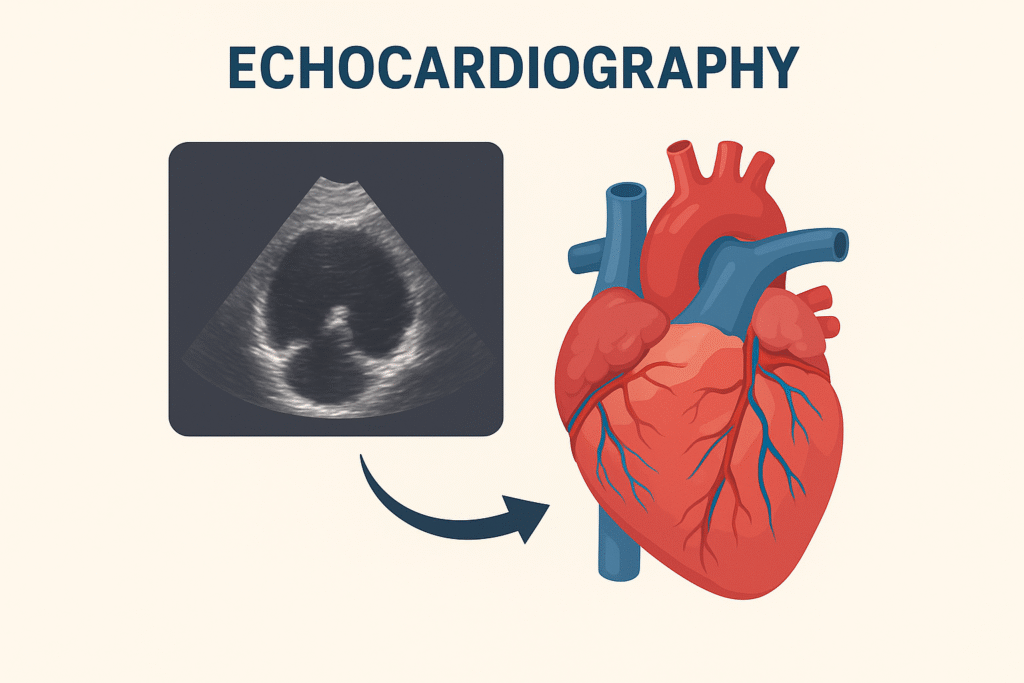Echocardiography
Echocardiography is a safe and non-invasive ultrasound test that uses sound waves to create detailed images of the heart. It helps doctors evaluate the structure and function of the heart chambers, valves, and blood flow.
This test is essential for diagnosing various heart conditions such as valve disorders, congenital defects, cardiomyopathy, and heart failure. It also helps in monitoring heart function after surgeries or treatments.
Why Echocardiography is Important
1. Detects abnormalities in heart valves and chambers
2. Assesses heart pumping strength and blood flow
3. Identifies fluid buildup or thickening of the heart walls
4. Helps guide treatment plans and monitor recovery
Types of Echocardiography Performed
1. Transthoracic Echocardiography (TTE): A standard echo performed using a probe on the chest surface.
2. Transesophageal Echocardiography (TEE): Provides clearer heart images using a probe placed in the esophagus.
3. Stress Echocardiography: Assesses how the heart performs during exercise or stress.
4. Doppler Echocardiography: Measures blood flow and pressure differences within the heart.

